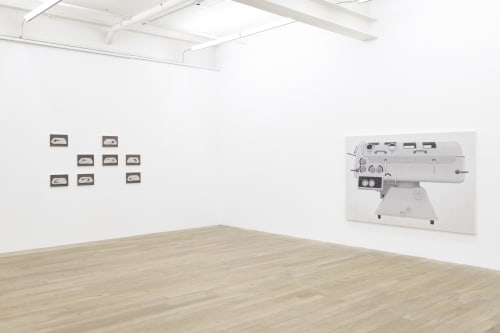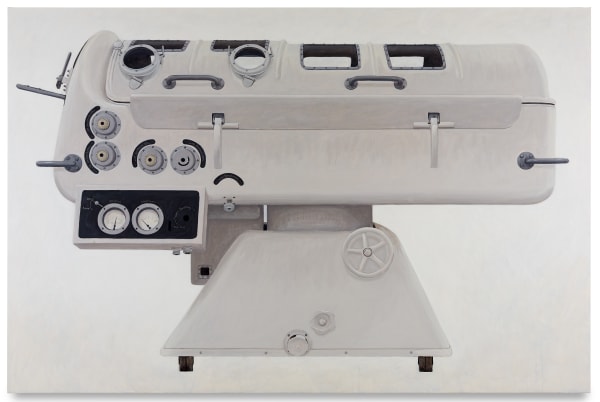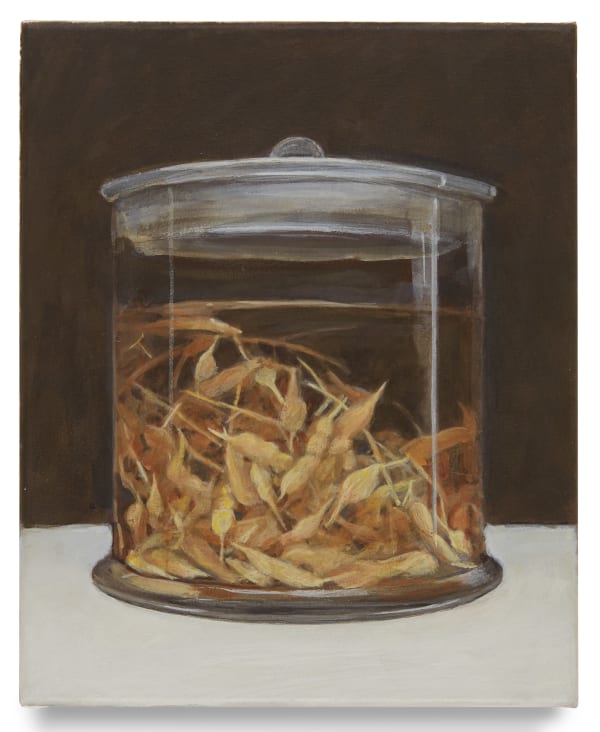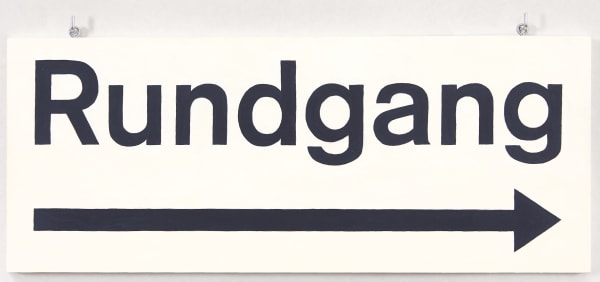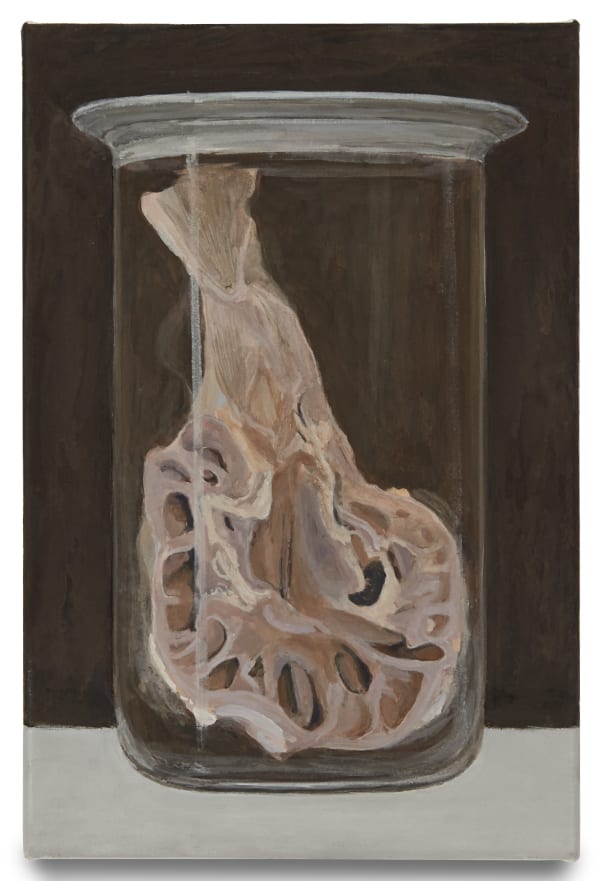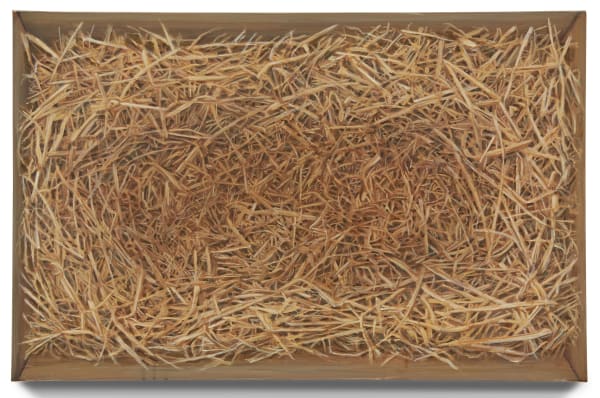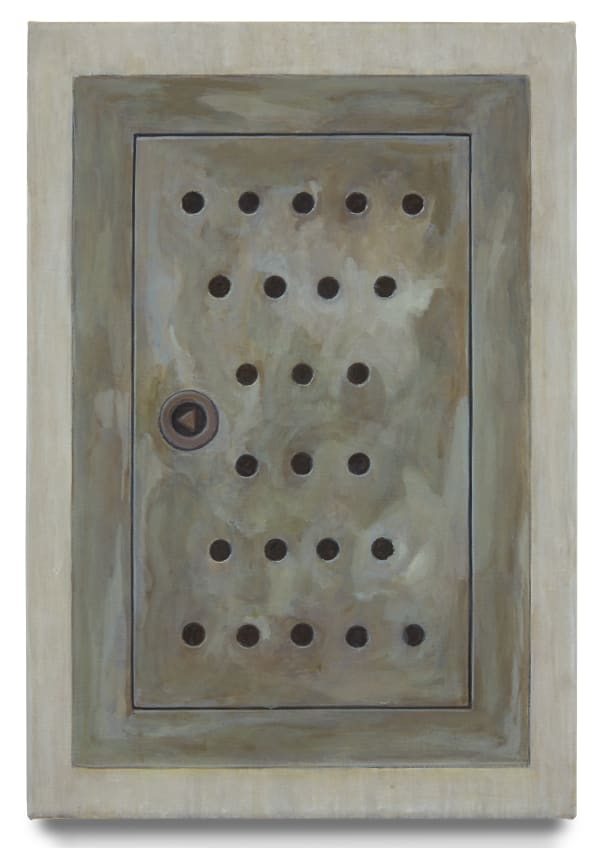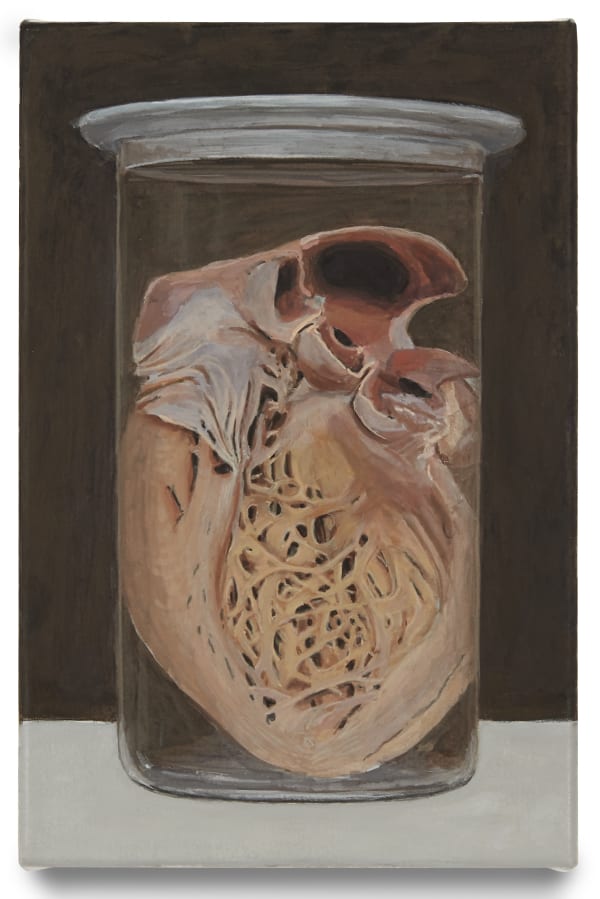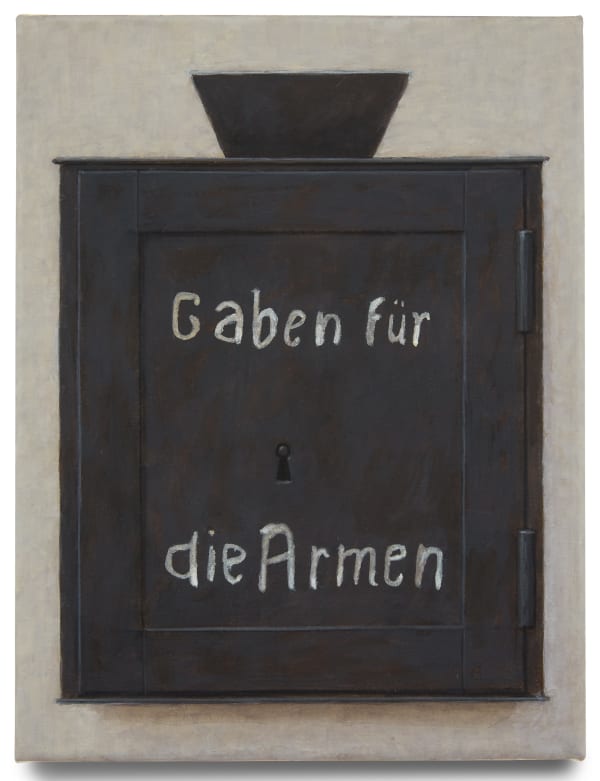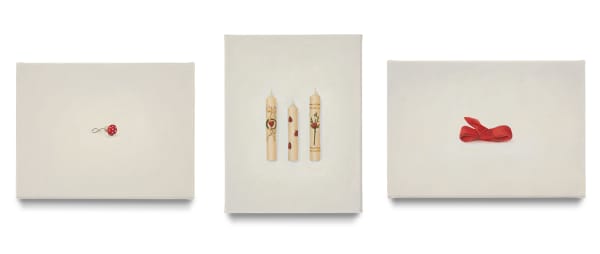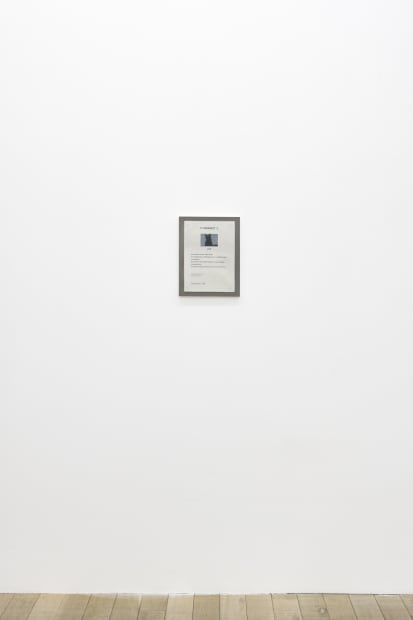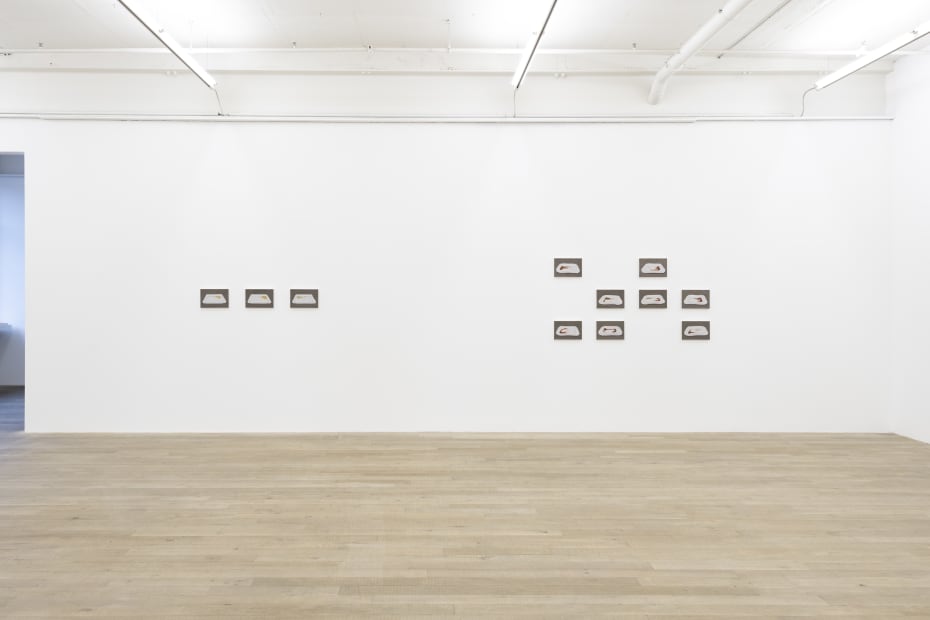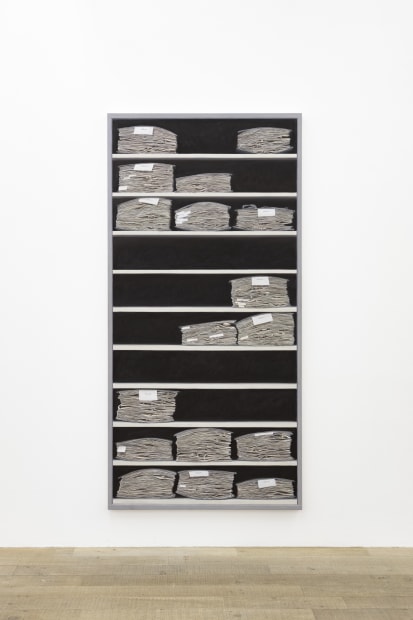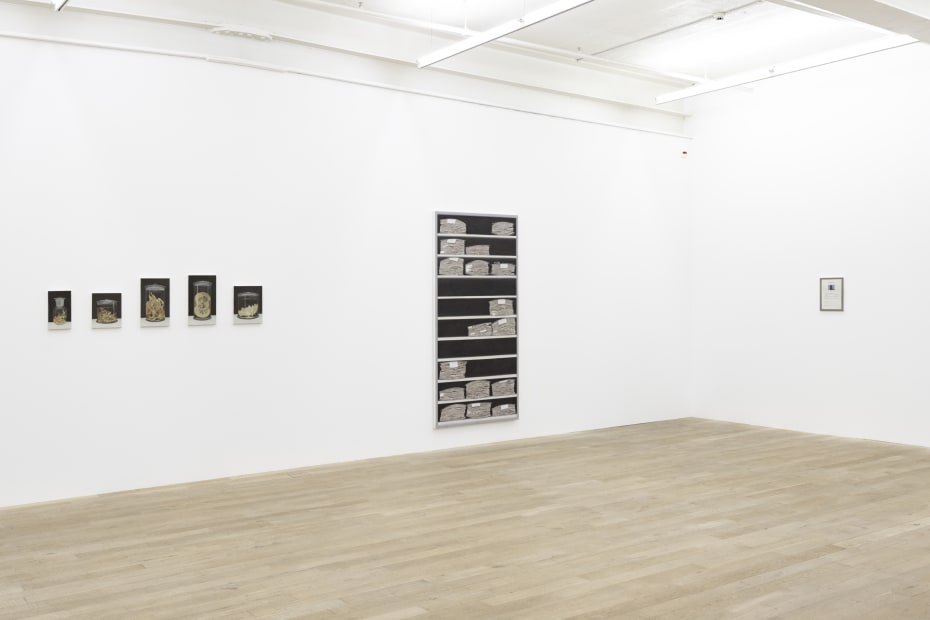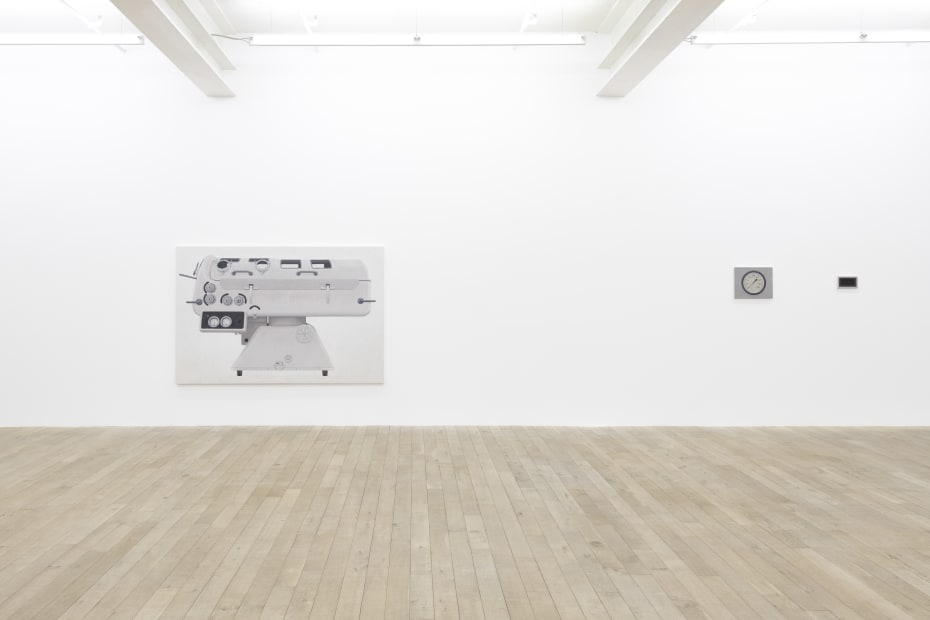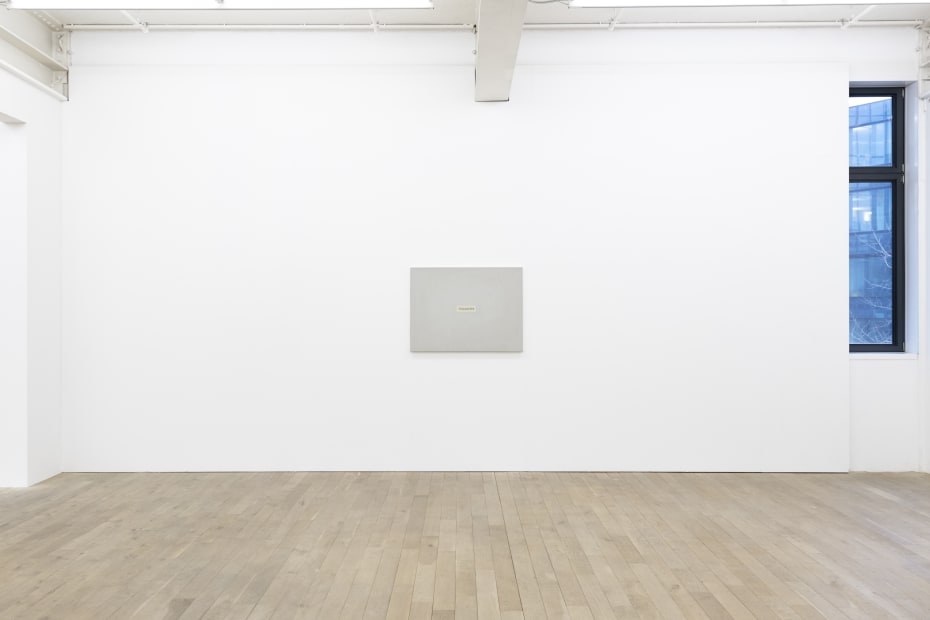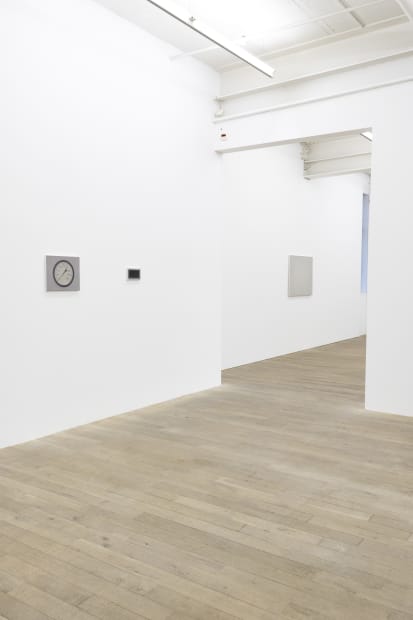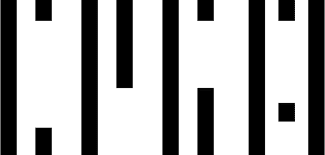Christoph Hänsli: StützpunktGalerie Peter Kilchmann
Zahnradstrasse, Zurich
Christoph Hänsli
Stützpunkt
Jan. 12 - March 09
Opening: Thursday, January 11, 6 - 8 pm
Zahnradstrasse 21, Zurich
Galerie Peter Kilchmann is pleased to announce the first solo exhibition Stützpunkt (Base Point) by Swiss artist Christoph Hänsli (*1963 in Zurich, where he lives and works) at the gallery's premises at Zahnradstrasse - a tour through a cabinet of curiosities full of forgotten or simply overlooked everyday objects, which are therefore particularly captivating. The current exhibition is linked to the group exhibition Four Positions in Painting in our gallery in 2022, in which several of the artist's works were already on display. Since the beginning of Hänsli’s artistic career the ''thing'' has been at the center. The artist turned to figurative painting at the end of the 1980s and has dedicated himself to it ever since. With his Popcorn series from 1992, Hänsli ultimately decided to reproduce every painted object on a scale of 1:1, a practice to which he has remained committed to this day. His ‘’thing portraits’’ emerge from a multitude of layers of colour and give a voice to found or newly discovered objects. Hänsli's works, which lie somewhere between conceptual art, realism, and pop art - if you want to try and categorize them as ''-isms'' - are factual and have a documentary approach at first glance, but are deeply subjective at second glance, interwoven with melancholy with a slight, subliminal, humorous twist. Thus, Hänsli creates a play, a dance between the presence and absence of things and humans.
Stützpunkt (Base Point) sends us on a journey to discover three different rooms filled with meaningful objects which have been transformed using acrylic, oil or egg tempera on canvas, cardboard, or paper. Newly produced works that have never been shown before are juxtaposed to a few earlier works. Thereby the leitmotifs of Hänsli's work are even more visible. In the foyer, the exhibition begins with a single, small- format work that simultaneously announces it: Rundgang (Round Tour, 21 x 52 x 1.5 cm), underlined by an arrow pointing from left to right, depicted in black acrylic paint on canvas and mounted on MDF, mimicking a signpost - clearly the beginning. On the reverse, however, is the same motif: each time the sign is turned, the arrow always points in the same direction. The artist's interest in typography, language and the multi-layered meaning of words has traversed his oeuvre throughout the years.
The first room reveals a universe of painted relicts from our civilization which recount the attempt to construct (human) existence. For example, three identically off-white paper plates, which nevertheless harbour differently smeared blobs of mustard sauce, gaze confidently back at us: Bratwurst (Grilled Sausage, 20 x 30 cm each). This three-part, minimalist series captures the strange beauty of a moment to which we usually pay little attention. The sausage and the human being become present in their absence. Bratwurst is joined by the Currywurst series (Curry Sausage, 20 x 30 cm, each), an eight-part work that shows remnants of ketchup-curry sauce on the same uniform cardboard trays. Seemingly insignificant everyday objects gain significance by giving them a platform and putting them in the spotlight through Hänsli's work. Beer glasses, for example, became the protagonists in Weekend Project I (2003) and salt sticks in Weekend Project II (2004).
On the adjacent wall sprawls a painting of a long-discarded lung ventilator, self-evidently in a lifelike manner: Eiserne Lunge (Iron Lung, 138 x 209 cm). The work can be seen as a readymade that has been re-contextualized through the metamorphosis from three-dimensionality to two-dimensionality and has undergone a loss of function and a change in meaning: A transformation of a cold, technical machine into sensual, poetic painting – the brushstrokes wander across the geometric shapes of the apparatus, slowly and progressively exploring them. The machine's trajectory into sensuality eventually transforms it into its senselessness. This also applies to the work The Generator (2015). Related to the cold and scientific nature of these machines are further works shown within the framework of the exhibition, like the different depicted Feuchtpräparate (Liquid Preserved Specimens) and Nasspräparte (Wet Preserved Specimens) and Herbarium, Lauch (Herbarium, leek, 210.5 x 103.5 cm).
Frontally portrayed, closed facades convey emotions of hope, desire, promise and especially the urge for answers: What is hiding behind closed doors? To this question, Hänsli deliberately gives us no answer through his paintings of closed coverages in the second room. For example, we encounter the works Tresor (Safe, 49.5 x 43.5 cm), Rote Klappe (Red flap, 65.5 x 85.5) or Milchkasten (Parcel box, 54 x 43.5 cm), all paintings of closed doors, of exteriors. The artist does not want to show us what lies behind them, but rather wants us to explore the surface of these objects, these screens. Further the painted offertories focus additionally on the supposed salvific effect of words. The curiosity of what lies concealed is potentiated by Hänsli's method. For the artist, a thing is never just a thing. Hänsli paints objects in order to be able to see them properly, in particular to make them tangible for himself. Paintings and especially representations of vessels always function as containers for content, narratives or traditions that are inscribed into the surfaces by both the artist and the viewer. Also, in this section are works that center text fragments, such as Fernsehparty (TV Party, 18 x 13 cm) or Grosser Unterschied (Big Difference, 18 x 12 cm): once important letters that have lost their relevance over time and have become indifferent. Vermisst (Missing, 34.5 x 26.5), an oeuvre from the first room, can also be seen in this context. Is the cat Lua for instance still missing or has it been long forgotten? Language and texts also act as storage tools and are at the same time whirring, transient constructs, gaining a new dimension of eternity in the artist's painting.
Eventually, the beginning and the end, the fragility of human existence and its disappearance are scrutinized more intensively: pleasure and comfort are closer together than one might think. Pommes (24 x 76 cm) is a work that evokes this very word in black letters on a potato-brown background. It is a sequence of letters that reminds the viewer of the promising flavour of this delicacy - the potato dish, however, is present by its absence. Marlies (24 x 40 cm) is the first "full-body portrait" of a person in Hänsli's oeuvre: a mountain of tipped-out ashes. Hänsli's serious humor is hidden, approaching the work carefully and respectfully. It encourages us to discard old patterns of perception and to approach things that we would otherwise not have considered ''image-worthy'' with unexpected curiosity. The work Krippe (Crib, 52 x 80 cm), which shows the fresh imprint of a living creature, is also part of this iconography. Triptychon (20 x 26 cm; 26 x 20 cm; 20 x 29 cm) depicts objects that can automatically evoke memories when viewed. For example, as small and ordinary as a toadstool decoration can be, we have probably looked past it instead of really looking at it.
The end (of the round tour) is known to be followed by the epilogue, in Hänsli's case the work Gruppentreffpunkt (Group meeting point, 32.5 x 76 cm): What if nobody meets at the group meeting point? High expectations are attached to this work. This painting has been created shortly before the pandemic in 2020 and has therefore never been shown before - an ironic turn of events that Hänsli could not have planned better.
Christoph Hänsli's work has been shown in solo and group exhibitions since 1989. Past exhibitions have been presented in the following institutions (selection): Zürcher Kantonalbank, Collection Presentation (2023), Kunsthaus Zürich (2022); Judin, Berlin (2022/2018); Kunst(Zeug)Haus, Rapperswil (2021); Villa Renata, Basel (2020); Last Tango, Zurich (2019); Grand Palais, Bern (2016) and Helmhaus, Zurich (2012). Works by the artist can be found in numerous public collections, such as the art collection of the City of Zurich, the Bob and Kathrin Gysin Foundation, Zurich, the art collection of the Zürcher Kantonalbank, the collection of the Swiss National Bank, the collection of Peter and Elisabeth Bosshard - Stiftung Kunst(Zeug)Haus, Rapperswil, the Helvetia art collection, Basel and the Swiss National Library.
For further information please contact: Fabio Pink (fabio@peterkilchmann.com)
-
 Christoph Hänsli, Eiserne Lunge, 2022
Christoph Hänsli, Eiserne Lunge, 2022 -
 Christoph Hänsli, Nasspräparat Raphanus sativus (Rettich, 1982), 2020
Christoph Hänsli, Nasspräparat Raphanus sativus (Rettich, 1982), 2020 -
 Christoph Hänsli, Rundgang, 2023
Christoph Hänsli, Rundgang, 2023 -
 Christoph Hänsli, Pommes, 2022
Christoph Hänsli, Pommes, 2022 -
 Christoph Hänsli, Feuchtpräparat Nephrolithiasis, 2022
Christoph Hänsli, Feuchtpräparat Nephrolithiasis, 2022 -
 Christoph Hänsli, Krippe, 2023
Christoph Hänsli, Krippe, 2023 -
 Christoph Hänsli, Elektroabdeckung, 2022
Christoph Hänsli, Elektroabdeckung, 2022 -
 Christoph Hänsli, Feuchtpräparat Aneurysma arteriae coronariae, 2022
Christoph Hänsli, Feuchtpräparat Aneurysma arteriae coronariae, 2022 -
 Christoph Hänsli, Fleurs, 2022
Christoph Hänsli, Fleurs, 2022 -
 Christoph Hänsli, Gaben für die Armen, 2022
Christoph Hänsli, Gaben für die Armen, 2022 -
 Christoph Hänsli, Gruppentreffpunkt, 2020
Christoph Hänsli, Gruppentreffpunkt, 2020 -
 Christoph Hänsli, Triptychon , 2023
Christoph Hänsli, Triptychon , 2023 -
 Christoph Hänsli, Tiefenmesser, 2023
Christoph Hänsli, Tiefenmesser, 2023 -
 Christoph Hänsli, Rundgang, 2023
Christoph Hänsli, Rundgang, 2023 -
 Christoph Hänsli, Rote Klappe, 2022
Christoph Hänsli, Rote Klappe, 2022 -
 Christoph Hänsli, Nasspräparat Raphanus sativus (Rettich, 1982), 2020
Christoph Hänsli, Nasspräparat Raphanus sativus (Rettich, 1982), 2020 -
 Christoph Hänsli, Bratwurst, 2022
Christoph Hänsli, Bratwurst, 2022 -
 Christoph Hänsli, Nasspräparat Cucurbita maxima (Riesenkürbis, 1951), 2020
Christoph Hänsli, Nasspräparat Cucurbita maxima (Riesenkürbis, 1951), 2020
